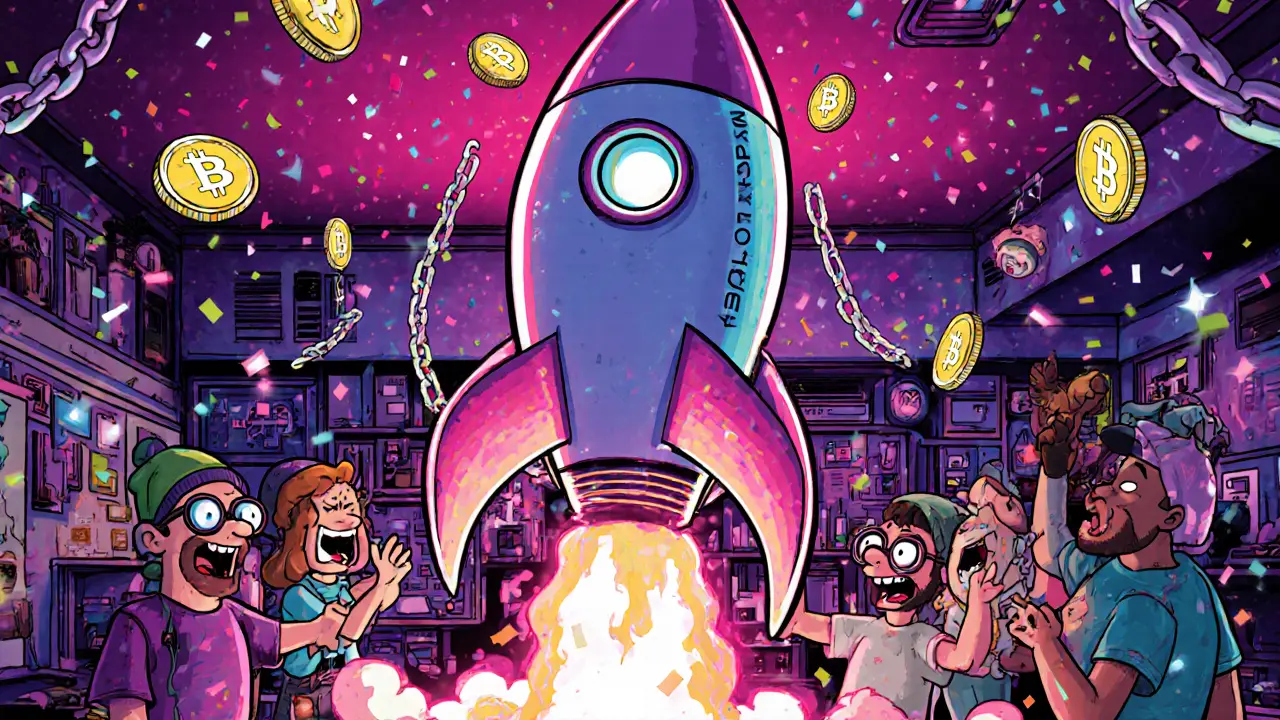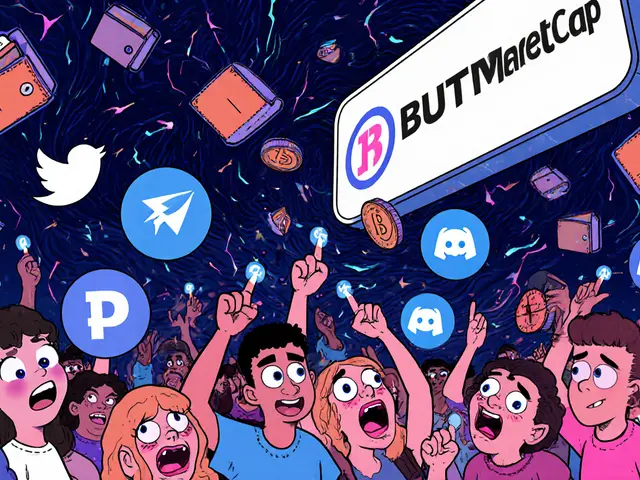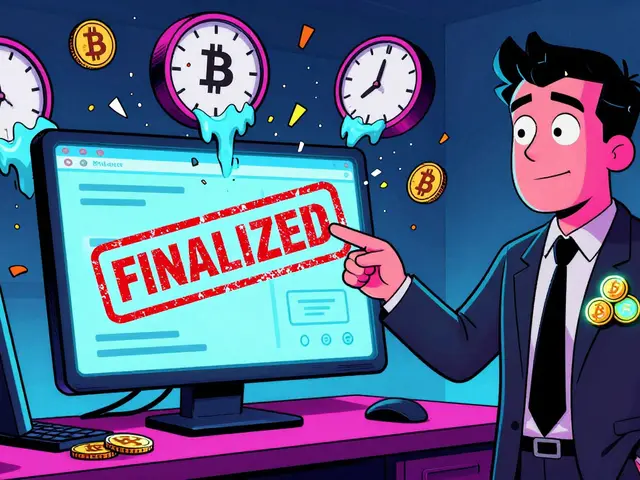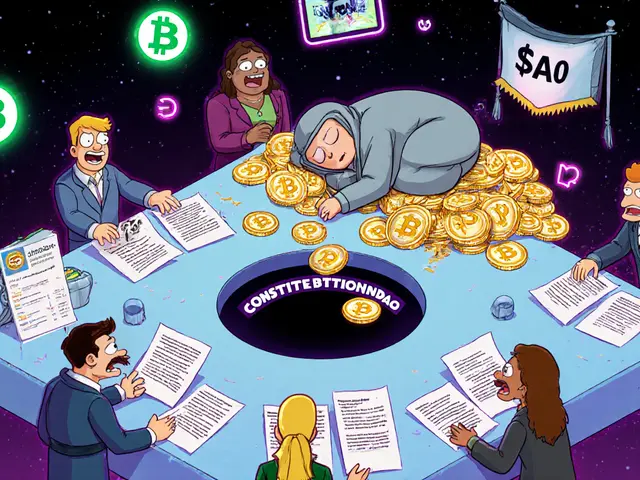Spores Network Staking Calculator
Calculate Your Staking Benefits
Enter your SPO amount to see estimated rewards and access levels
Your Staking Benefits
Estimated Annual Return
~15% APR (estimation based on platform data)
Access Tier
Elite ClubEarly access to IGOs/INOs with 24-hour priority
Spores Network (SPO) isn’t another meme coin. It’s a niche platform built for creators who want to launch NFTs and blockchain games without getting lost in the noise of big marketplaces like OpenSea. If you’ve ever wondered how indie developers get their metaverse projects off the ground, Spores Network is one of the quiet players trying to make that happen - but it’s not for everyone.
What exactly is Spores Network?
Spores Network is a multi-chain NFT and DeFi platform that lets creators run Initial NFT Offerings (INOs), Initial Game Offerings (IGOs), and Initial DEX Offerings (IDOs). Think of it like a launchpad - similar to how startups use Kickstarter, but for blockchain-based games, digital art, and virtual fashion. The platform supports Ethereum, BNB Chain, and Polygon, which means creators can pick the blockchain that fits their budget and audience.
The SPO token is the engine behind all of this. It’s not just a currency; it’s a key to access features. You need SPO to vote on platform decisions, stake for early access to new NFT drops, pay reduced fees, or join the Elite Club for exclusive airdrops. It’s designed to be useful - not just speculative.
How does SPO actually work?
The SPO token runs on both ERC20 (Ethereum) and BEP20 (BNB Chain) standards. That flexibility matters because it lets users interact with the platform whether they’re using MetaMask, Trust Wallet, or other wallets connected to these chains.
Here’s how users engage with SPO:
- Staking: Lock up SPO tokens to unlock tiers. Higher tiers give you priority access to new IGOs and INOs - the early-stage projects that might blow up later.
- Governance: Hold and stake SPO to vote on proposals. The more you stake, the more voting power you have.
- Platform Fees: Pay listing or transaction fees in SPO and get discounts. It’s cheaper than using ETH or BNB for every small action.
- Elite Club: Pay a subscription in SPO to get automatic access to rare NFT drops before the public.
There’s also a capped supply of 5 billion SPO tokens. As of October 2024, about 1.05 billion are in circulation - just over 20%. The rest is locked in vesting schedules over 7 to 18 months, which helps prevent sudden dumps.
Who is Spores Network for?
If you’re a casual NFT collector who buys Bored Apes or Pudgy Penguins, Spores Network probably won’t interest you. The platform doesn’t have the traffic or brand recognition of OpenSea. Its 24-hour trading volume hovers around $36,000 - less than what OpenSea makes in a single hour.
But if you’re into early-stage blockchain gaming or metaverse projects? That’s where Spores shines. It’s built for investors who want to back indie GameFi teams before they hit the big exchanges. Think of it like angel investing - but in crypto form.
Creators benefit too. Instead of paying high fees to list on OpenSea or struggling to get visibility, they can use Spores’ integrated tools to run token sales, manage royalties, and build communities around their NFTs - all within one ecosystem.

How does it compare to bigger players?
Here’s a quick snapshot of how Spores Network stacks up against major competitors:
| Feature | Spores Network | OpenSea | Rarible | Binance NFT |
|---|---|---|---|---|
| Chains Supported | Ethereum, BNB Chain, Polygon | Ethereum, Solana, Polygon | Ethereum, Tezos | BNB Chain only |
| Launchpad Functionality | Yes (INOs, IGOs, IDOs) | No | Yes, limited | Yes |
| Market Cap (Oct 2024) | $176,355 | $1.4 billion | $110 million | $300 million |
| 24-Hour Trading Volume | $36,248 | $50+ million | $1.2 million | $20+ million |
| DeFi Integration | Staking, lending, liquidity mining | None | Basic staking | Yes, but limited to BNB |
Spores Network doesn’t compete on scale - it competes on specialization. It’s not trying to be the biggest marketplace. It’s trying to be the best launchpad for GameFi and metaverse projects that need cross-chain access and built-in DeFi tools.
Is SPO a good investment?
That depends on what you’re looking for.
As of November 2025, SPO trades at around $0.0001513. Its market cap is tiny - under $200,000 - and it ranks #6538 among all cryptocurrencies. That’s not a sign of failure. It’s a sign of early-stage development.
The token has seen volatility. Over the past week, it dropped 9.6% while the broader crypto market fell just 1.6%. That tells you two things: one, there’s low liquidity (a few big sellers can move the price); two, the community is small and sensitive to market swings.
There’s also a real risk: Spores Network’s website sometimes shows a Cloudflare error saying the platform isn’t available in your country. That’s not a glitch - it’s a regulatory workaround. Many early crypto platforms do this to avoid legal issues in places like the U.S. or EU.
Experts at Gate.com warn: “This early-stage development may pose risks for investors seeking more established projects.” That’s fair. If you’re looking for stable returns, look elsewhere. But if you’re willing to take a chance on a team that’s building something specific - and you believe in the future of cross-chain GameFi - then SPO could be worth watching.

How to get started with Spores Network
Here’s the real-world path:
- Buy SPO on a centralized exchange like Gate.io, Uniswap, or PancakeSwap. You can’t buy it directly with a credit card - you need crypto first.
- Connect your wallet (MetaMask or Trust Wallet) to the Spores Network platform.
- Stake SPO to unlock access to IGOs or INOs.
- Join the Elite Club if you want early access to rare drops.
- Use SPO to pay fees and earn discounts.
It’s not beginner-friendly. You need to understand wallets, gas fees, and cross-chain swaps. But if you’ve used DeFi before, the learning curve isn’t steep.
Documentation is available at spores-network.gitbook.io, but it’s sparse. Don’t expect tutorials or YouTube videos - most of the info is buried in their GitHub or Telegram channels.
What’s next for Spores Network?
The platform raised $2.96 million across four funding rounds - enough to build the core tech, but not enough to hire a big marketing team. That’s why you don’t see ads or influencers pushing it.
Its future depends on three things:
- Getting more GameFi studios to launch on its platform.
- Increasing trading volume beyond $36,000 per day.
- Expanding to more blockchains or integrating with Web3 social tools.
Right now, it’s a quiet experiment. But in a world where NFTs are moving from art to utility - where virtual land, in-game items, and digital fashion become real assets - platforms like Spores Network could become essential.
Just don’t expect it to be the next OpenSea. It’s trying to be something else: the backstage pass to the next big thing in blockchain gaming.
Is Spores Network (SPO) a scam?
No, Spores Network is not a scam. It’s a real platform with a public GitHub repository, transparent tokenomics, and live trading on major exchanges like Gate.io and Uniswap. The team behind it, Spores Labs, has published documentation and code. However, it’s an early-stage project with low liquidity and limited adoption, which makes it risky - not fraudulent.
Can I buy SPO on Coinbase or Binance?
Not directly on Coinbase. SPO is listed on Binance’s spot market in some regions, but availability varies. The most reliable places to buy SPO are Gate.io, Uniswap (v2), and PancakeSwap (v2). You’ll need to transfer ETH, BNB, or USDT to these platforms first.
What’s the difference between SPO and other NFT tokens like RARI or MANA?
RARI (Rarible) and MANA (Decentraland) are tokens for established marketplaces or virtual worlds. SPO is different - it’s a launchpad token focused on helping new GameFi and metaverse projects raise funds. It’s not for buying art or virtual land directly. It’s for accessing early-stage opportunities within those ecosystems.
Why is Spores Network’s trading volume so low?
Because it’s a niche platform with a small user base. Most traders still use OpenSea or Blur for NFTs. Spores Network’s audience is focused on early investors in GameFi projects - a much smaller group. The $36,000 daily volume is typical for early-stage tokens with limited marketing and no celebrity backing.
Does Spores Network work in the United States?
It’s unclear. The platform sometimes blocks U.S. users with Cloudflare errors, likely due to regulatory uncertainty around utility tokens and launchpads. While you might access it via a VPN, doing so could violate terms of service and carry legal risks. Always check local regulations before investing.
Is staking SPO worth it?
Only if you plan to participate in IGOs or INOs. Staking gives you priority access to new token sales, which can be profitable if you pick winners. But if you’re just holding SPO hoping for price gains, you’re taking on high risk for low reward. The staking rewards are modest - the real value is in early access, not yield.
Final thoughts
Spores Network (SPO) isn’t flashy. It doesn’t have a celebrity CEO or a viral Twitter campaign. But it’s solving a real problem: how do indie game devs and digital artists launch projects in a crowded, expensive crypto world? The answer isn’t more ads - it’s better tools.
If you’re a creator or an early-stage investor willing to dig beneath the surface, SPO might be worth your time. But if you’re looking for a quick flip or a safe bet? Look elsewhere. This isn’t a coin you buy because it’s trending. It’s a tool you use because you believe in the next wave of blockchain creativity - and you’re ready to build it with your own hands.






Atheeth Akash
this is actually kinda cool how they focus on indie devs instead of trying to be the next opensea. i like that they dont have the noise. 🤗